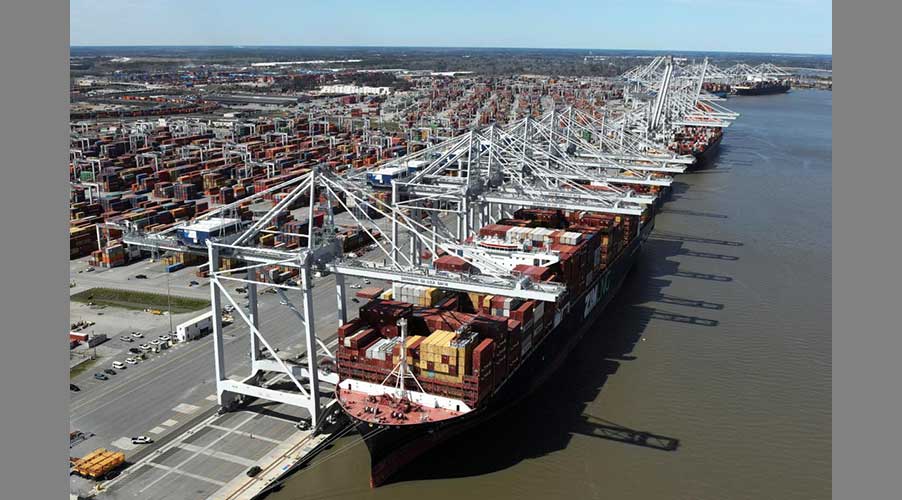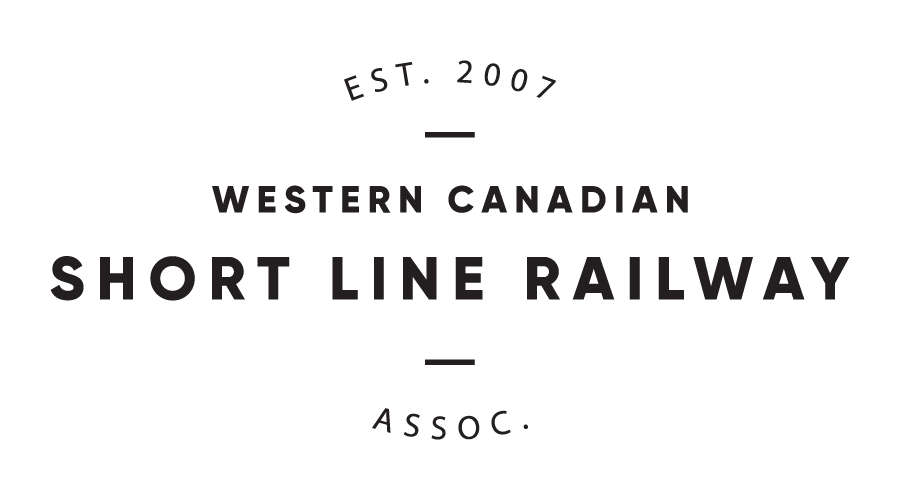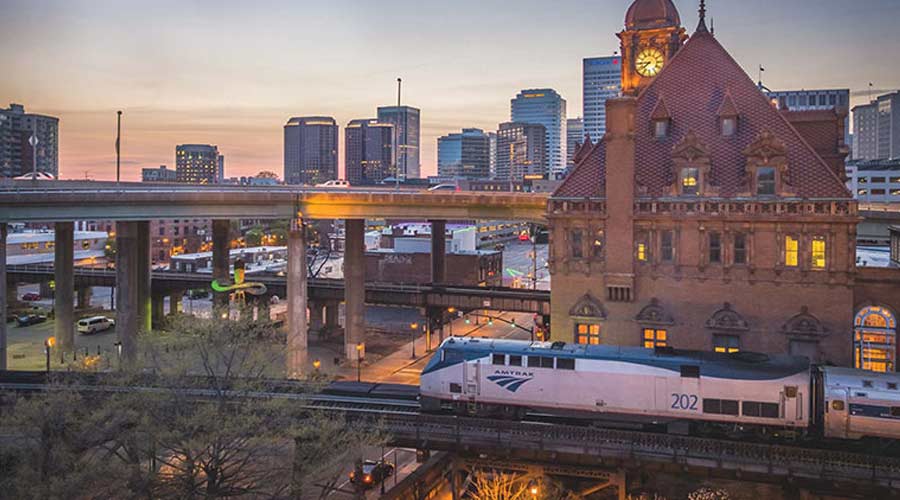Newsletter Sign Up
Stay updated on news, articles and information for the rail industry
Stay updated on news, articles and information for the rail industry
 railPrime
railPrime
RAIL EMPLOYMENT & NOTICES
Rail News Home
Intermodal
Rail News: Intermodal

4/20/2012
Rail News: Intermodal
Alameda Corridor now a decade old

advertisement
On April 15, the Alameda Corridor marked its 10th anniversary. Over the past decade, more than 150,000 trains have moved more than 20 million containers through the 20-mile freight-rail expressway linking the ports of Los Angeles and Long Beach, Calif., to the transcontinental rail network, according to the Alameda Corridor Transportation Authority (ACTA).
The corridor comprises a series of bridges, underpasses, overpasses and street improvements that separate freight trains from motorists and passenger trains, facilitating more efficient cargo movements through the region. The corridor features the mid-corridor trench, a 10-mile-long, 33-foot-deep and 50-foot-wide open trench that accommodates freight trains.
“The Alameda Corridor was designed to take trucks off local freeways and trains off the rail lines that go through our neighborhoods, and it works beautifully,” said Long Beach City Councilman and ACTA Chairman Gary DeLong in a prepared statement. “Without the rail line dedicated to port traffic, we would have seen massive and continuous gridlock all around southern California, especially during the height of the import boom a few years ago.”
Prior to the completion of the corridor, trains on four branch lines would cross more than 200 grade crossings at an average speed of 10 to 15 mph, and motorists would wait 20 to 30 minutes for a train to pass, ACTA officials said. Now, trains travel along the corridor at an average speed of 40 mph.
Last year, the corridor averaged 42 trains per day. Since the corridor opened, the average length of a train serving the ports has grown from 6,000 feet to 8,000 feet carrying more than 300 containers, and some trains are more than 10,000 feet long, according to ACTA.
The corridor comprises a series of bridges, underpasses, overpasses and street improvements that separate freight trains from motorists and passenger trains, facilitating more efficient cargo movements through the region. The corridor features the mid-corridor trench, a 10-mile-long, 33-foot-deep and 50-foot-wide open trench that accommodates freight trains.
“The Alameda Corridor was designed to take trucks off local freeways and trains off the rail lines that go through our neighborhoods, and it works beautifully,” said Long Beach City Councilman and ACTA Chairman Gary DeLong in a prepared statement. “Without the rail line dedicated to port traffic, we would have seen massive and continuous gridlock all around southern California, especially during the height of the import boom a few years ago.”
Prior to the completion of the corridor, trains on four branch lines would cross more than 200 grade crossings at an average speed of 10 to 15 mph, and motorists would wait 20 to 30 minutes for a train to pass, ACTA officials said. Now, trains travel along the corridor at an average speed of 40 mph.
Last year, the corridor averaged 42 trains per day. Since the corridor opened, the average length of a train serving the ports has grown from 6,000 feet to 8,000 feet carrying more than 300 containers, and some trains are more than 10,000 feet long, according to ACTA.


 LRW Honors Amtrak’s Acheson As Railway Woman Of The Year
LRW Honors Amtrak’s Acheson As Railway Woman Of The Year
 From Editor-In-Chief Foran: Of Gender Equity And Inclusion
From Editor-In-Chief Foran: Of Gender Equity And Inclusion
 Spotlight On Some Of Today’s Rail Safety Products
Spotlight On Some Of Today’s Rail Safety Products
 Women of Influence in Rail eBook
Women of Influence in Rail eBook








